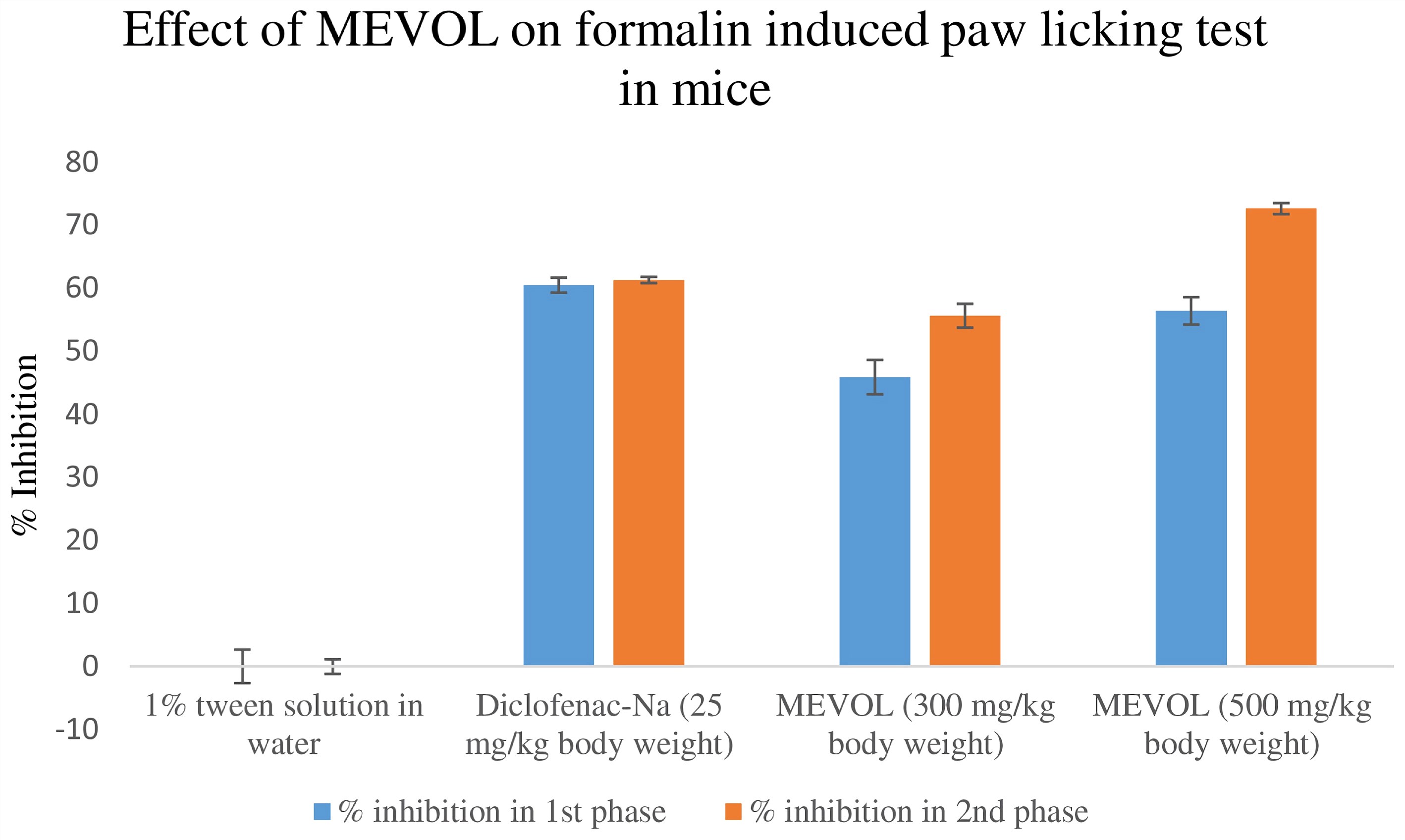Formalin induced Inflammatory Pain Modeling & Pharmacodynamics Service
The formalin test in mice or rat is a valid and reliable model of nociception and is sensitive for various classes of analgesic drugs. Creative Biolabs utilizes this model to screen your novel compounds by recording the formalin-induced nociceptive behaviors followed by scoring and analysis of the raw data.
Introduction of Formalin-Induced Pain Model
Hind paw injection of formalin is a model used to assess intense, short-lasting (minutes to tens of minutes) persistent pain and evaluate analgesic drugs in laboratory animals. In this widely used model, a solution of formaldehyde is injected subcutaneously into a mouse or pat paw. The effect of formalin is expressed by hindlimb licking and shaking that occur principally in two phases. The early phase (Phase I) is short (~10 min), followed by a brief (~5 min) period of relative quiescence, after which the late phase (Phase II) of hind limb shaking and licking lasts an additional 50 minutes or so. The first phase is thought to result from direct activation of primary afferent sensory neurons, whereas the second phase has been proposed to reflect the combined effects of afferent input and central sensitization in the dorsal horn.
Pain response scoring is determined by recording the pain-like behaviors per unit of time including licking, flinching, raising or shaking of the injected paw. Compounds that typically affect the first phase include local anesthetic, such as lidocaine. Many analgesics, including intrathecal nonsteroidal anti-inflammatory drugs, NMDA antagonists, morphine, and gabapentin, inhibit only Phase II responses, but not Phase I.
 Fig. 1 Effect of the methanol extract of Viscum orientale (MEVOL) leaves on formalin induced paw licking test in mice. (Amina et al. 2016)1, 2
Fig. 1 Effect of the methanol extract of Viscum orientale (MEVOL) leaves on formalin induced paw licking test in mice. (Amina et al. 2016)1, 2
Features of Formalin-Induced Pain Models
- Widely used, the formalin test is a tonic model of continuous pain resulting from formalin-induced tissue injury.
- The effect of formalin is concentration-dependent and resultant pain behaviors can vary widely with regard to different concentrations.
- In this model, spontaneous pain-related responses can be observed in a freely moving unrestrained animal.
- Behaviors can be scored over a prolonged period such that the precise onset and duration of analgesics can be assessed.
- It is a useful model, particularly for the screening of novel compounds, since it encompasses inflammatory, neurogenic, and central mechanisms of nociception.
Meantime, Creative Biolabs offers other pain models to study different pain-related conditions and to evaluate the analgesic activity of novel drugs:
- Carrageenan-Induced Paw Edema
- Adjuvant-Induced Arthritis (AIA) Rodent Model
- Monosodium Iodoacetate (MIA)-Induced Osteoarthritis Model
- Streptozotocin (STZ)-Induced Diabetic Neuropathy Model
- Spinal Nerve Ligation (SNL) Rat Model
- Partial Sciatic Nerve Ligation (PSL) Rat Model
- Chronic Constriction Injury (CCI) Model
- Vincristine-Induced Neuropathy Model
The comprehensive list of rodent neurological disease models is placed below for your review. Please click the links for more detailed description of each model:
Creative Biolabs has years of experience in helping our clients advance their innovations through preclinical efficacy stages. We guide to choose the most clinically relevant models and provide study-specific protocols and study designs to respond to our clients' specific research needs. If you are interested in our services, please contact us to start the conversation.
References
- Amina, K.; et al. Antioxidant, antinociceptive and CNS activities of Viscum orientale and high sensitive quantification of bioactive polyphenols by UPLC: [J]. Frontiers in Pharmacology. 2016, 7(285708).
- under Open Access license CC BY 4.0, without modification.
For Research Use Only.
